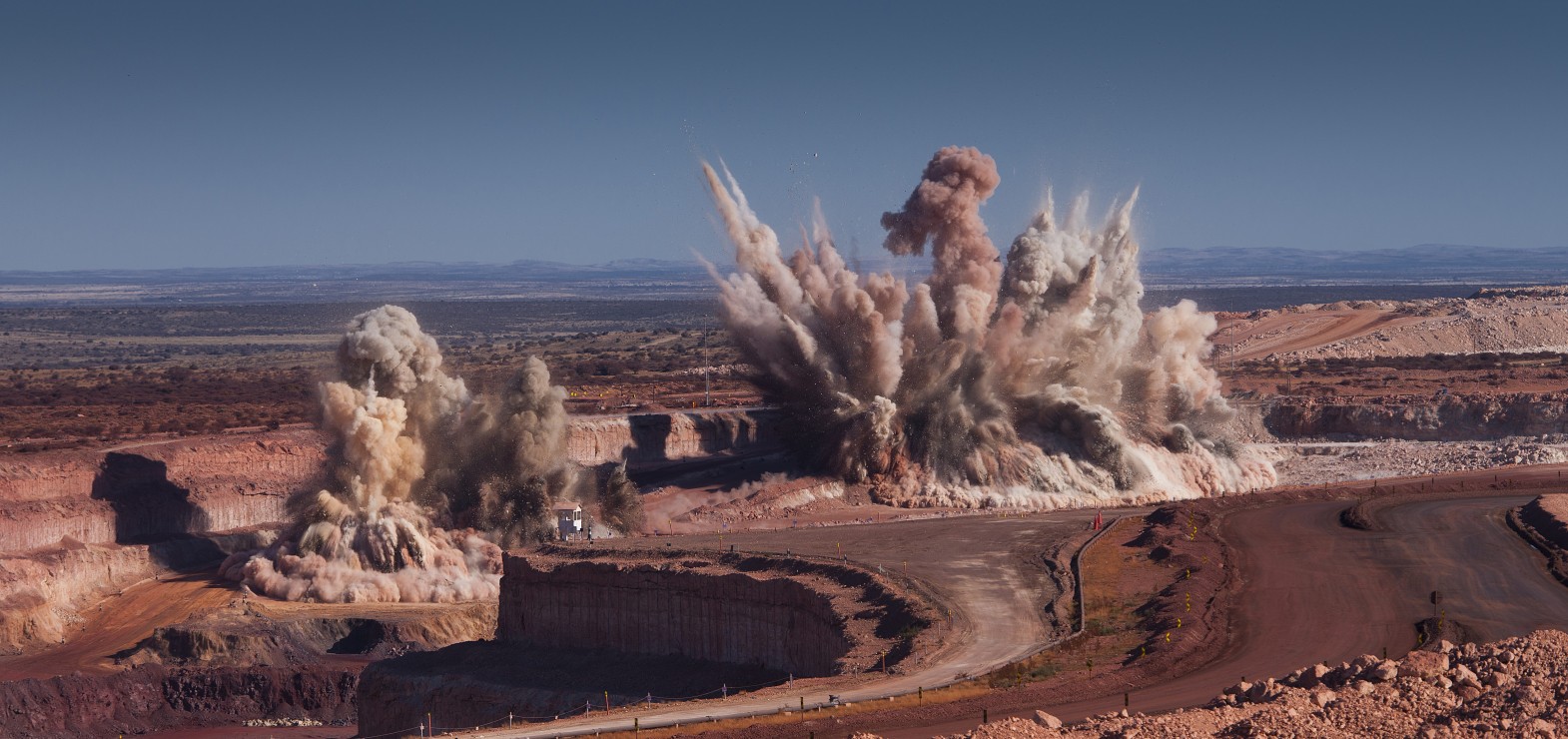Course:SPPH381B/TermProject/Aluminum Foil - Soham/Blasting
Introduction
Explosives are primarily used to disintegrate both ore and rock for easier extraction and processing throughout many mining industries, including bauxite mining. Although bauxite mining involves surface level mining, blasting is still used regularly. Historically, explosives have been used in mines since the 1800’s. [1] From 1978 to 2003, over a 1000 injuries were reported from blasting in mines. 50.1% of these injuries were attributed to lack of blast area security. The remaining half of reported injuries was comprised of a variety of hazards including premature blasts, misfires, flyrock, and toxic nitric oxide and nitrogen dioxide inhalation. [2]
The blasting process involves two employees. The drillers are responsible for driving mobile drilling equipment to drill holes in open pit mines, while the blasters are involved in placing explosives in blast holes and detonating explosives. [3]
Any mining operator that uses explosives on their blasting site must follow labour regulations set out by their provincial or national regulatory body. Examples of regulations in Canada include the requirement to storage explosive magazines properly, maintain logs and records of explosive use, maintain signage to indicate explosive location, locate explosive at least 60 meters from access into a mine, mechanical and electrical installations, area of refuge for workers, and storage area for fuels or other fire sources. [1]
There are four types of explosives used in surface mining for bauxite and other ores. These include slurries, dry mixes, hybrid heavy Aluminum Nitrate Fuel Oil (ANFO), and emulsions. Slurries are made of fuel oil or gas bubble sensitized water gels, are relatively cheap, but are not usable for all types of mining operations such as wet holes. Emulsions are ammonium nitrate solutions mixed with water or a calcium nitrate and can work with standing water in a borehole, but do not have enough physical resistance to overcome jetting water unlike a gel-based explosive. Dry mixes are also ammonium nitrate-based and are used with cheap fuel oil. When insufficient fuel is available to react with the ammonium nitrate in dry mixes, brown fumes or nitrogen dioxide formation can occur. Heavy ANFO include a mixture of ammonium nitrate, calcium nitrate water, and fuel oil, and are best used with wet holes. [4]
Summary of hazards
Ergonomic Hazards
1. Repetitive strain from carrying heavy equipment
2. Vibration from heavy mobile drilling use
Chemical Hazards
1. Toxic nitric oxide and nitrogen dioxide inhalation
2. Dust inhalation
Safety Hazards
1. Tripping on blast site
Physical Hazards
2. Noise-induced hearing loss
3. Electrocution from electrical and mechanical installation
Psychosocial Hazards
1. Depression and loneliness from being sent to work in remote locations
References
- ↑ 1.0 1.1 Government of Ontario, Ministry of Labour. (2014). Explosives Hazards in Ontario Mines (Fact Sheet). Retrieved March 27, 2017, from https://www.labour.gov.on.ca/english/hs/sawo/pubs/fs_explosives.php>.
- ↑ Bajpayee, T. S., Verakis, H., & Lobb, T. (2014). Blasting Safety- Revisiting Site Security (Rep.). Retrieved from "https://www.cdc.gov/niosh/mining/UserFiles/works/pdfs/bsrss.pdf">.
- ↑ Kihn. (2017). Considering a career as a Driller or Blaster in Canada? Retrieved March 28, 2017, from "http://careerminer.infomine.com/considering-a-career-as-a-driller-or-blaster-in-canada-what-you-need-to-know/">.
- ↑ Kennedy, B. A. (2009). Surface mining. Littleton, CO: Society for Mining, Metallurgy, and Exploration.
